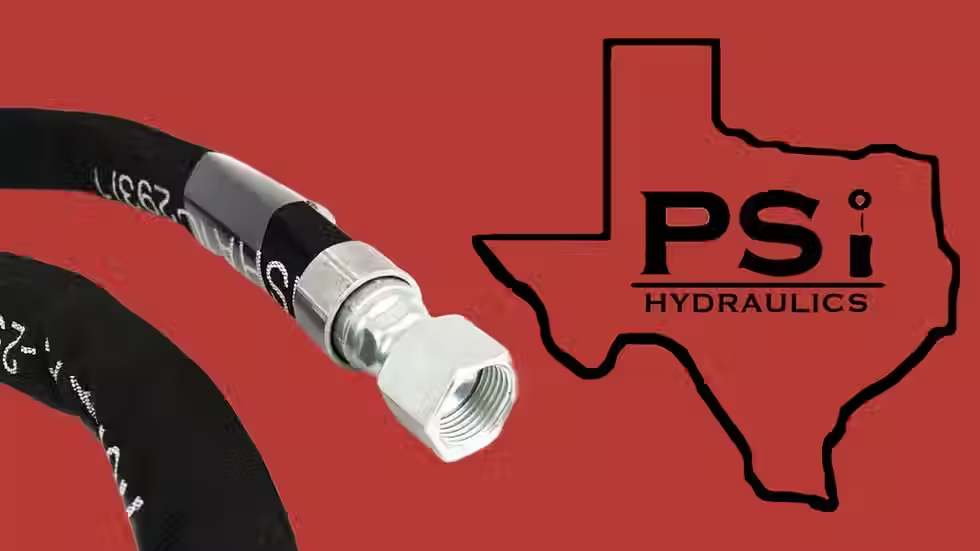Understanding Hydraulic Shock: Causes and Mitigation Strategies
- PSI Hydraulics

- Jul 15
- 3 min read

Hydraulic systems are engineered for power, control, and precision—but when fluid dynamics get disrupted, even the best-designed systems can experience failure. One of the most damaging and often misunderstood phenomena in hydraulics is hydraulic shock, also known as water hammer.
This sudden pressure surge can wreak havoc on components, compromise safety, and lead to costly downtime. At PSI Hydraulics, we believe prevention starts with understanding. In this post, we break down what hydraulic shock is, how it happens, and how you can protect your equipment.
What Is Hydraulic Shock?
Hydraulic shock is a rapid, high-pressure spike that occurs when fluid in motion is forced to stop or change direction suddenly. The energy created by this abrupt shift doesn’t just disappear—it’s transferred into the system, resulting in a shockwave that travels through pipes, hoses, valves, and actuators.
Symptoms include:
Loud banging or knocking sounds
Vibrations in lines or components
Cracked fittings or burst hoses
Premature seal or valve failure
These events can happen in fractions of a second and may not always be immediately visible, making them dangerous and difficult to diagnose without the right tools and experience.
Common Causes of Hydraulic Shock
Hydraulic shock can be triggered by several routine conditions, including:
1. Sudden Valve Closure
When a valve closes too quickly, the momentum of the moving fluid has nowhere to go. This abrupt stop sends a pressure wave back through the system, which can damage sensitive components.
2. Pump Startup or Shutdown
Improper sequencing or startup procedures can cause flow instability, especially in large systems. Starting a pump against a closed valve or stopping it too quickly can initiate a shockwave.
3. Load Changes
Unexpected changes in mechanical load—such as a heavy object dropping or a fast retraction of a hydraulic cylinder—can generate shock conditions.
4. Air Entrapment
Air bubbles in the system compress and expand unpredictably, adding to instability and amplifying pressure surges when compressed fluid is suddenly displaced.
5. Poor System Design or Component Mismatch
Incorrectly sized hoses, fittings, or accumulators can contribute to pressure imbalances and make systems more susceptible to shock.
Real-World Examples of Hydraulic Shock
Excavators: A sudden stop in boom movement can cause shock that damages control valves.
Industrial Presses: Rapid die retraction without flow dampening can burst hoses.
Marine Systems: Unexpected load changes or valve closures in shipboard hydraulics often result in damaging pulses throughout confined systems.
In each case, the root problem isn’t the load itself—it’s the speed of change and the system’s inability to absorb that energy safely.
Consequences of Uncontrolled Hydraulic Shock
Left unchecked, hydraulic shock can cause:
Seal failure due to sudden pressure spikes
Cracked valve bodies or fittings
Burst hoses leading to leaks or contamination
Increased wear on pumps and motors
Downtime and repair costs that exceed the cost of preventive components
In safety-critical industries, like aerospace or heavy equipment, a single shock event can lead to operational failure or personnel risk.
Preventing Hydraulic Shock: Mitigation Strategies
Fortunately, hydraulic shock is both detectable and preventable—with the right strategies in place.
1. Slow-Closing Valves
Use control valves with regulated closing speeds to allow gradual pressure equalization. Avoid slamming valves shut—automated or manual.
2. Hydraulic Accumulators
Accumulators act like shock absorbers, storing excess pressure and releasing it gradually. Proper sizing and placement are key.
3. Air Bleed Valves
Eliminating air from the system ensures more stable flow and prevents compression waves caused by air pockets.
4. Flow Control Devices
Install flow restrictors or dampers to regulate fluid speed, especially in areas where load changes occur.
5. Sequencing Circuits
Design systems with operational sequences that reduce abrupt starts or stops, such as staged valve openings.
6. Routine Maintenance
Hydraulic shock often stems from wear or misalignment. Regular inspection of valves, hoses, and fittings helps catch vulnerabilities early.
PSI Hydraulics: Shock-Proofing Your System
At PSI Hydraulics, we’ve seen firsthand how a small oversight can lead to major failures. That’s why we go beyond repairs—we help identify root causes and build systems that resist shock by design.
Our services include:
System diagnostics to identify high-risk areas
Cylinder reconditioning to restore pressure handling
Whether you’re running a single hydraulic press or managing dozens of field units, our team can help harden your system against damage and downtime.

Don’t Let Pressure Get the Best of Your Equipment
Hydraulic shock isn’t just a nuisance—it’s a silent threat that can erode performance and increase costs over time. The good news? It’s preventable with smart engineering, proactive maintenance, and the right support team.
Talk to PSI Hydraulics today to schedule a system assessment or consultation. Let’s build a safer, more resilient hydraulic operation—one that stays productive under pressure.
.png)






Comments